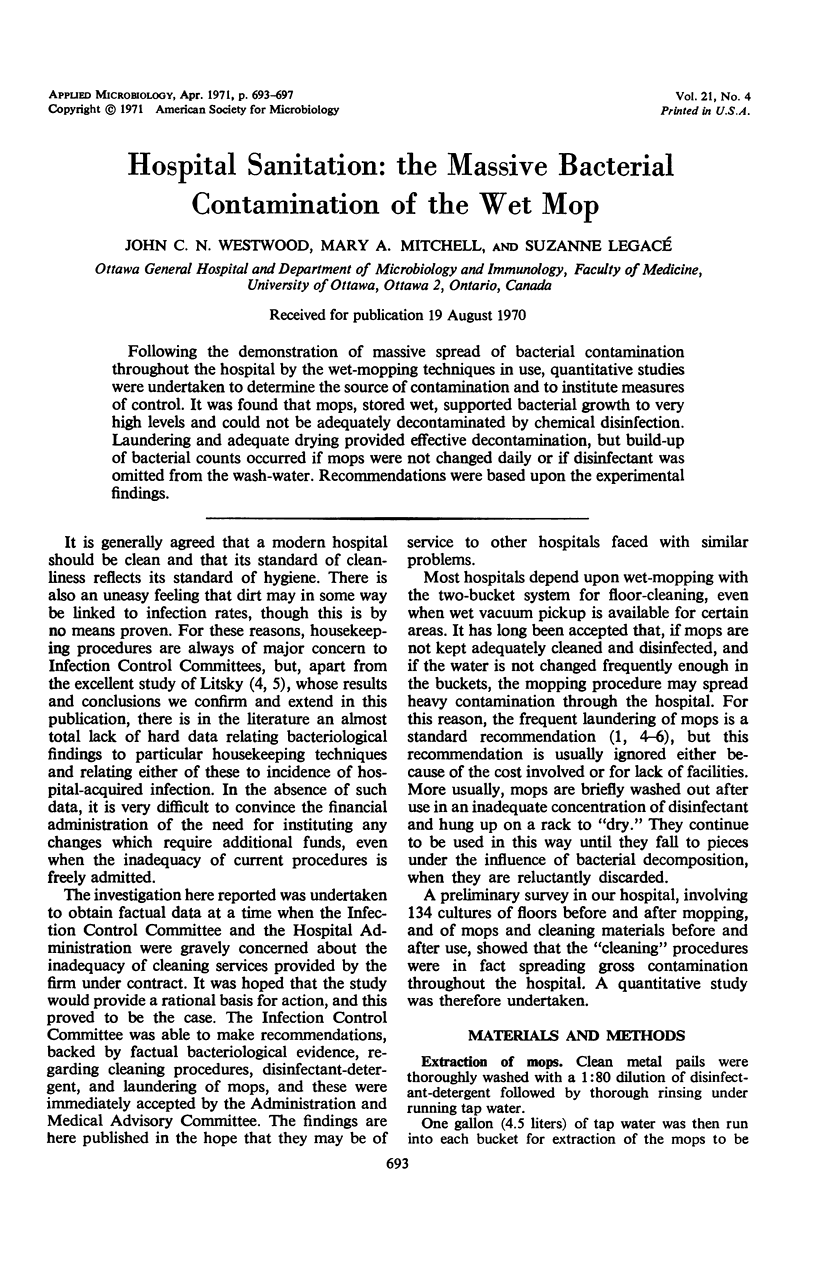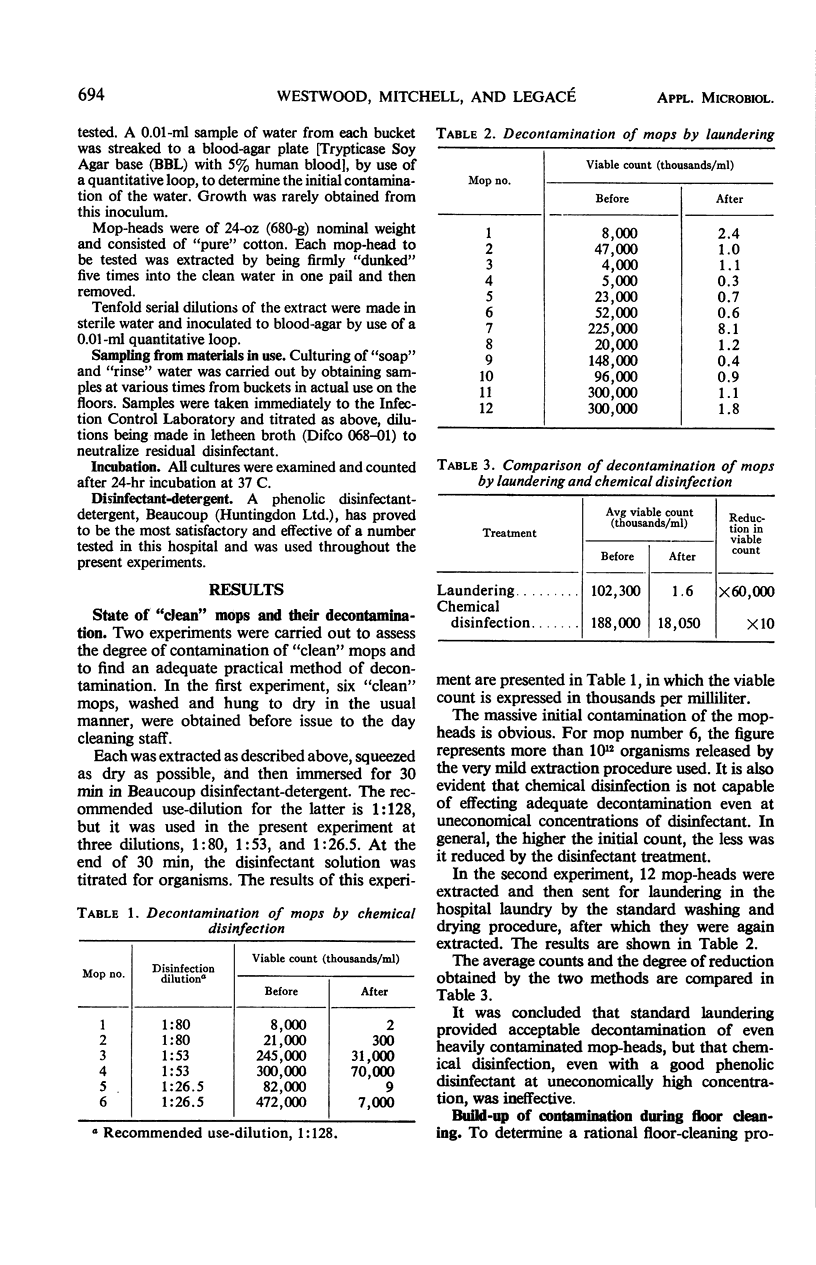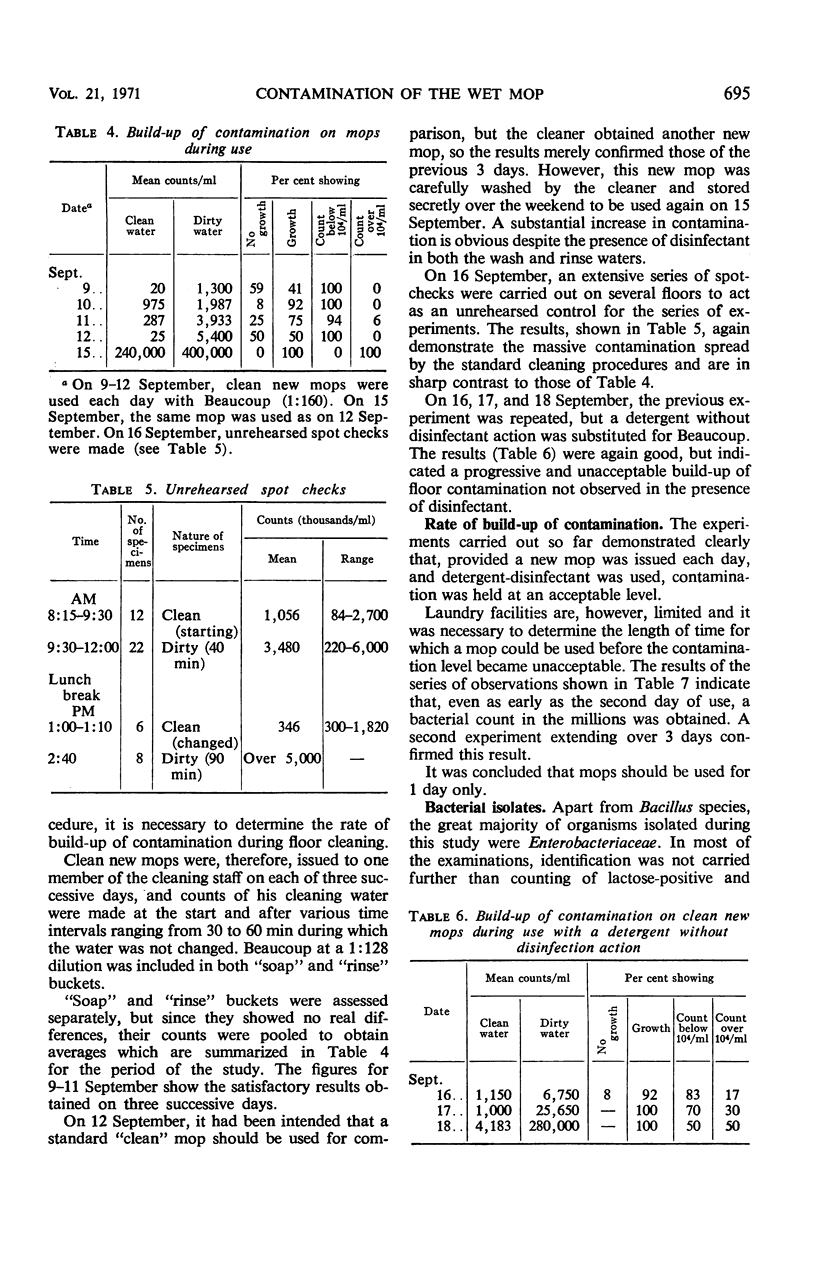Abstract
Following the demonstration of massive spread of bacterial contamination throughout the hospital by the wet-mopping techniques in use, quantitative studies were undertaken to determine the source of contamination and to institute measures of control. It was found that mops, stored wet, supported bacterial growth to very high levels and could not be adequately decontaminated by chemical disinfection. Laundering and adequate drying provided effective decontamination, but build-up of bacterial counts occurred if mops were not changed daily or if disinfectant was omitted from the wash-water. Recommendations were based upon the experimental findings.
Full text
PDF




Selected References
These references are in PubMed. This may not be the complete list of references from this article.
- Hurst V., Sutter V. L. Survival of Pseudomonas aeruginosa in the hospital environment. J Infect Dis. 1966 Apr;116(2):151–154. doi: 10.1093/infdis/116.2.151. [DOI] [PubMed] [Google Scholar]
- Litsky B. Y. Use of sterile mops reduces contamination. Hosp Manage. 1965 Dec;100(6):46–54. [PubMed] [Google Scholar]


